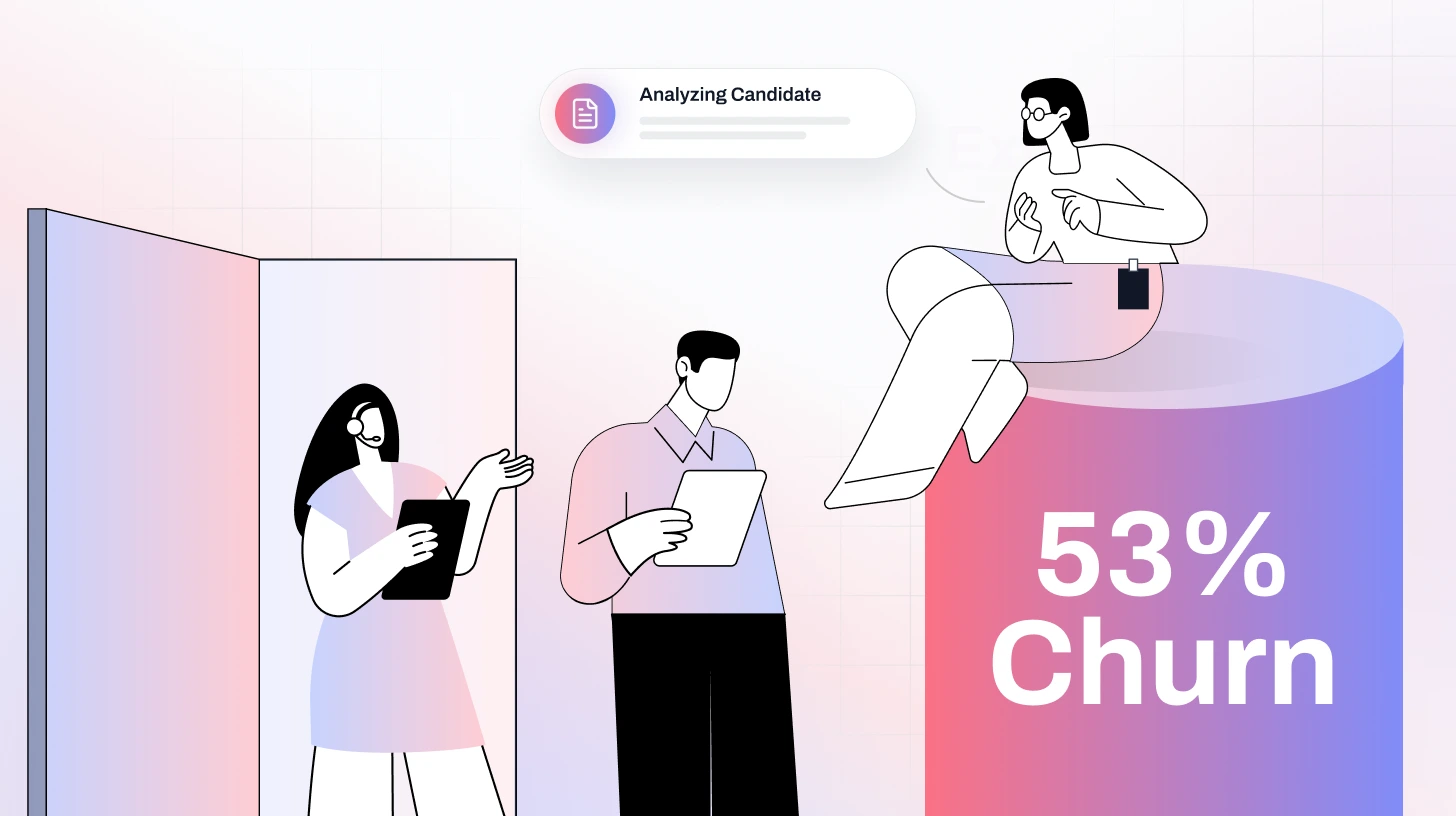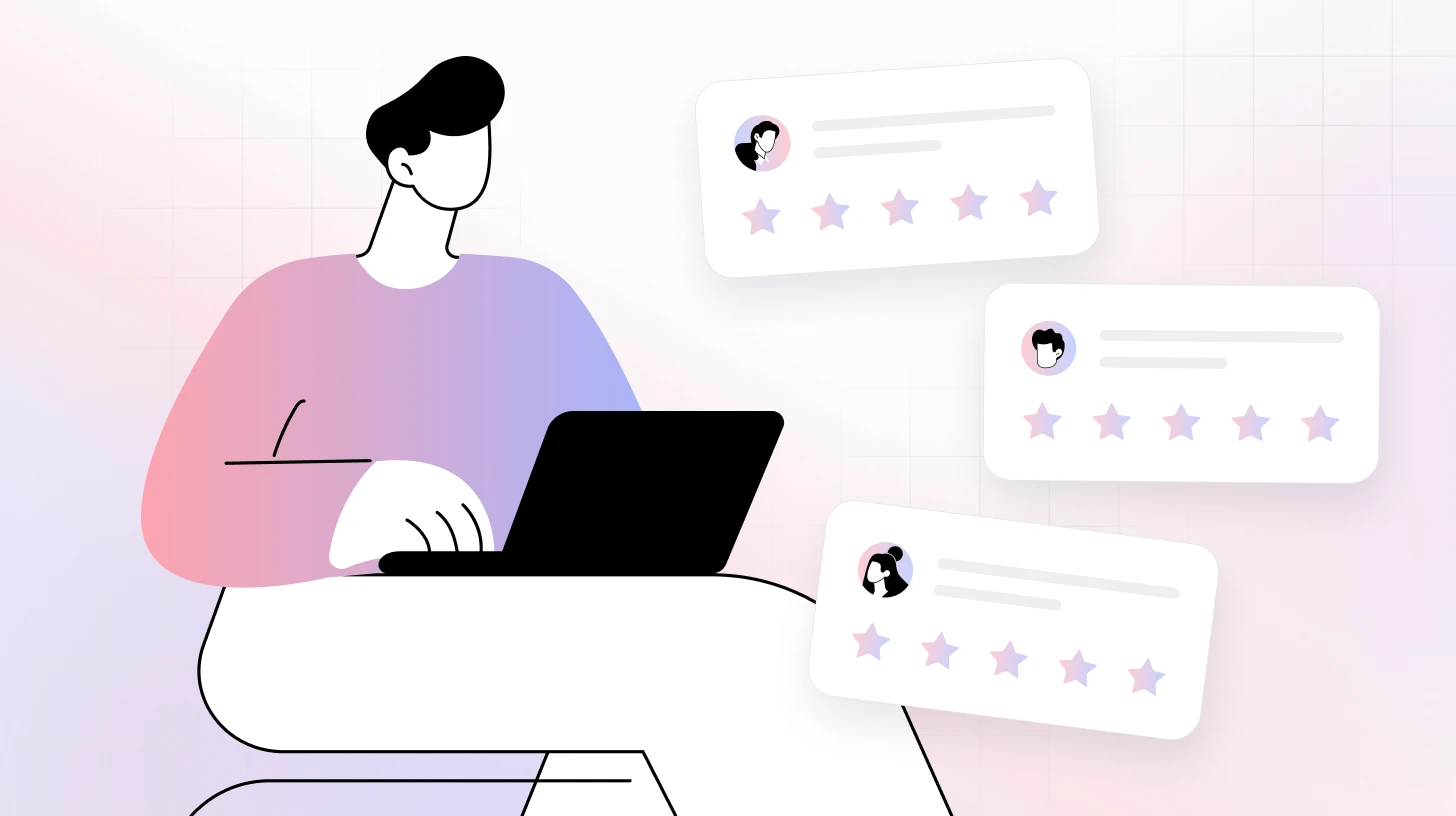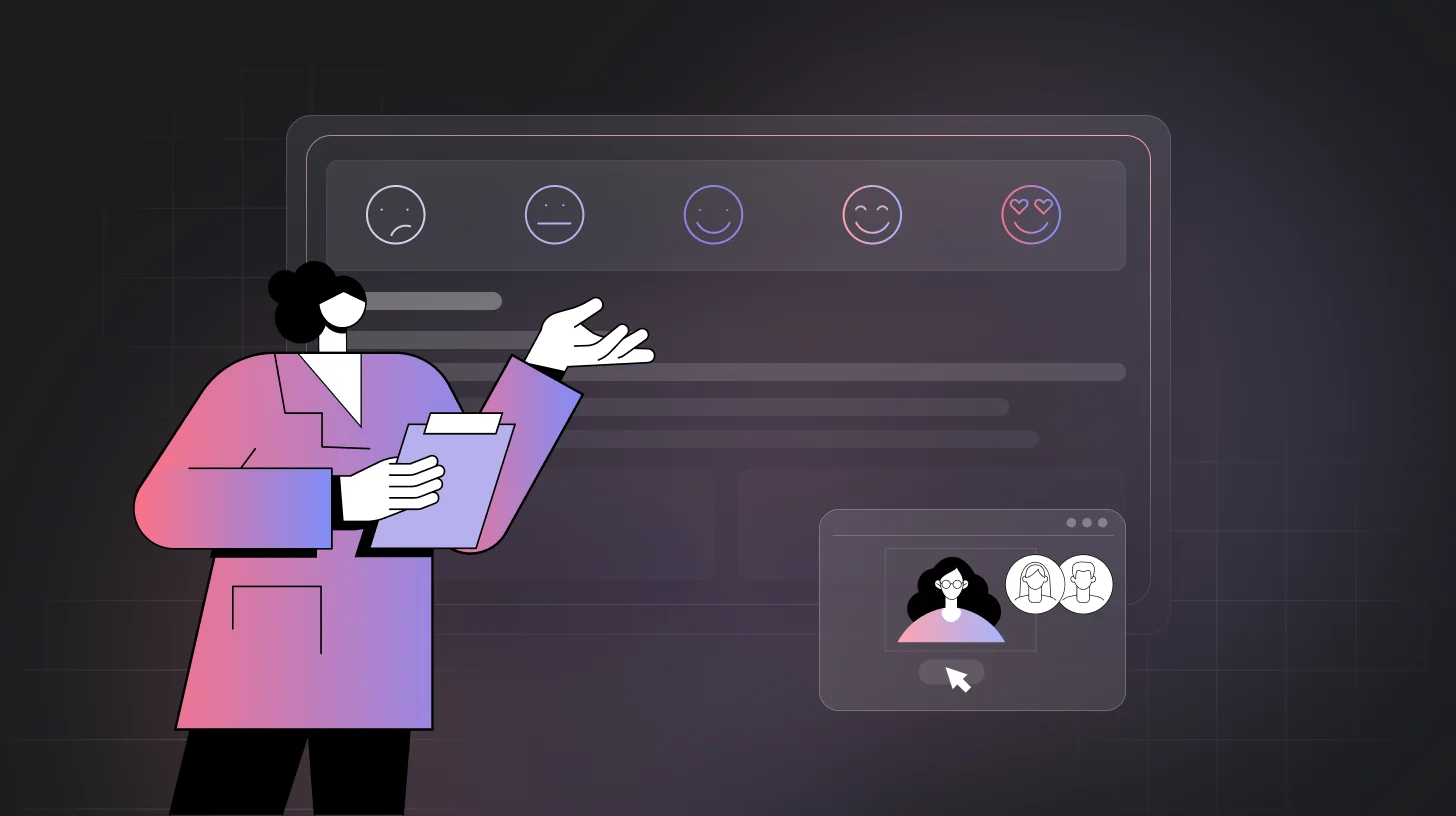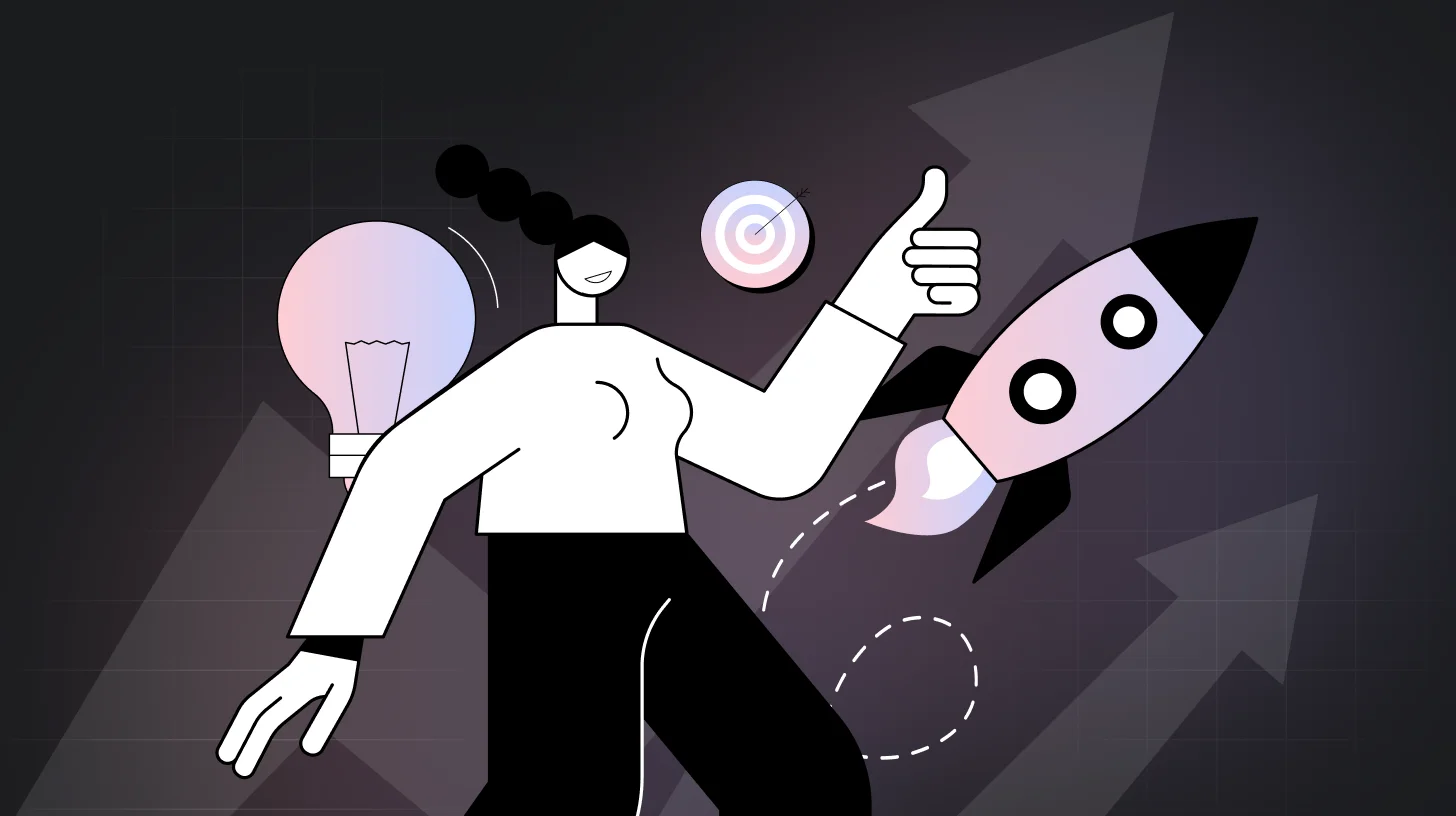 Blog
Blog 10 Interview Questions to Ask Churned Customers for Valuable Insights
10 Interview Questions to Ask Churned Customers for Valuable Insights10 Interview Questions to Ask Churned Customers for Valuable Insights

Churn. The one breakup your business can’t afford to ignore.
And yet it happens, even to the best products.
Whether it's clunky onboarding, missing features, better pricing elsewhere, or just bad timing, customers leave. But here’s the catch: most companies move on without ever asking why.
Big mistake.
Because churn isn’t just a loss, it’s feedback. And feedback is gold.
In fact, research shows it’s 5–7x more expensive to acquire a new customer than to keep an existing one. So if you’re only focused on filling the funnel and ignoring the exits, you’re bleeding revenue.
The smartest companies do something different: They turn lost customers into learning opportunities with churn interviews.
Unlike generic exit surveys or NPS scores, a real conversation with a churned customer can reveal the exact moment things went south, what frustrated them, what they hoped for, and what could have made them stay.
TL;DR
- Customer churn is painful, but it's also a chance to learn. When someone leaves, there's often a clear reason. Finding it helps you prevent the next exit.
- Most companies never ask the right follow-up questions. A short survey won’t uncover what actually went wrong. Real conversations do.
- TheySaid’s AI interviews help teams get honest, detailed feedback without the awkwardness. You hear directly from the customer, without chasing them down.
- Churn isn’t always about price or features. Sometimes it’s how the customer felt unsupported, unheard, or unclear on value.
- One team using TheySaid uncovered a communication gap they didn’t know existed. After making changes, they won back 22% of lost users.
- The best way to retain customers? Understand why others left. Talk to them. Learn from them. And then act on what you find.
How Customer Churn Affects Revenue, Retention, and Growth
Churn is not a signal; it’s a warning sign for your entire business engine. When customers walk away, whether they cancel, downgrade, or just quietly stop engaging, they’re telling you something your dashboards can’t always explain. And if you're not paying attention, that silent exit can quietly erode your revenue, retention rates, and growth potential.
Think about it: You can spend months optimizing acquisition, but if customers are slipping away within weeks or months, you're losing compounding value with every churned account.
Instead of treating churn as a KPI to review at the end of the quarter, smart businesses treat it as a strategic lever. Here's why:
- Every churned customer loses future revenue, not just today's.
- High churn increases your Customer Acquisition Cost (CAC) pressure—because you're constantly replacing value instead of building it.
- Churn messes with Net Revenue Retention (NRR), which tells investors, teams, and stakeholders how healthy your growth truly is.
Many teams confuse churn analysis with win-loss analysis, but they serve different purposes and focus on different customer stages.
Here’s how they compare:
Churn Analysis vs. Win-Loss Analysis
Suggested read: How AI Win/Loss Analysis Boosts Sales by Understanding Buyer Feedback
What Win-Loss and Churn Interviews Have in Common
While they focus on different stages—pre-sale vs. post-sale—both win-loss and churn interviews share a common thread: they involve direct conversations with the people making decisions.
- Win-loss interviews uncover why a buyer chose your solution or why they didn’t.
- Churn interviews uncover why a paying customer decided to stay loyal or leave.
Both give you uncensored, real-world insights that you won’t find in CRM tags or NPS scores. And both help you spot patterns, improve positioning, and close experience gaps that directly affect growth.

Did you know?
Reducing churn rate by just 5% can boost profitability by 25–125%. Small gains in retention can massively impact revenue. Source
Why Churn Interviews Reveal More Than Metrics Ever Will
Traditional churn metrics are essential. They show you the churn rate, renewal rate, product usage trends, NPS scores—the "what" of customer behavior.
But they don’t explain the “why.”
To truly reduce churn and improve customer retention, you need to go beyond dashboards. You need to talk to the people behind those numbers, the customers who left.
Here’s what churn interviews uncover that metrics alone can’t:
1. The Expectation Gap
Maybe the product was overpromised during sales. Maybe it didn’t evolve with the customer’s needs. Or maybe the onboarding never connected what was sold to real-world outcomes.
These gaps between what was expected and what was delivered often only surface when you ask churned customers to walk you through their experience.
Churn interviews help you pinpoint:
- Promises that weren’t kept
- Features that fell short
- Misalignment between value messaging and actual impact
This context is gold for your marketing, onboarding, and product teams.
2. Lifecycle Weak Spots
Churn doesn’t usually happen overnight. It builds up quietly through missed opportunities, delayed support, or unaddressed frustration.
You won’t find this in a usage report. But ask a churned customer, and they’ll often describe the slow unraveling of the relationship.
Common friction points that churn interviews reveal:
- Confusing onboarding that left users stuck
- Poor feature adoption and lack of follow-up
- Reactive instead of proactive customer support
- Renewal experiences that felt more like surprise invoices than value conversations
With these insights, you can turn a leaky funnel into a smoother, stickier customer journey.
3. Real Competitive Threats
Your competitors are always in the background, waiting to poach your customers. And churn interviews often reveal how and when they succeed.
You’ll learn:
- Which competitors do your customers switch to and why
- What alternatives are being perceived as “better value”
- Where your positioning or pricing leaves you vulnerable
This intel gives your GTM and product teams a sharper edge to defend against churn triggers.
4 . What “Too Expensive” Actually Means
“Price” is the most common churn excuse. But more often than not, it’s just a polite way of saying, “I didn’t see enough value.”
Churn interviews help you unpack that vague response.
- Was the ROI unclear?
- Was the product hard to justify internally?
- Was it missing a key feature or integration?
- Was your solution perceived as non-essential?
Understanding what “value” really means to your customers in their own words can guide pricing strategy, product roadmap decisions, and retention plays.
Suggested read: How to Calculate Churn Rate: Formula, Examples, and Ways to Reduce It
10 Interview Questions to Ask Churned Customers for Real Insights
When a customer leaves, it's easy to label the reason as "pricing" or "no longer a fit." But these answers are often surface-level. To truly reduce churn, you need to dig deeper—with thoughtful, open-ended questions that spark honest feedback.
Here are 10 churn interview questions that go beyond generic exit surveys:
1. What originally made you choose our product or service?
Start with the positive. This sets the tone and helps you understand what expectations they had from day one.
2. Was there a specific moment or experience that triggered your decision to leave?
Look for the turning point. This question uncovers emotional or support-driven friction.
3. Was there anything frustrating or confusing about using our product?
This question helps you identify UX or onboarding issues that push people away silently.
4. What part of the product or experience didn’t meet your expectations?
Uncover whether the issue was with the feature set, usability, reliability, or customer service.
5. Was there a specific feature you expected but didn’t find?
This question reveals expectation gaps and innovation opportunities for your business.
6. Did you consider reaching out for help before canceling? Why or why not?
Reveals whether customers felt empowered to ask for help or were ignored until they gave up.
7. How did your experience with our support or customer success team affect your decision?
Service can make or break retention. This question helps you find out how big a role it played.
8. Are you using a different solution now? What made you choose them over us?
This question helps you get competitive intelligence straight from your ex-customers.
9. If you could change one thing about our product or service, what would it be?
A single feature or friction point could be the reason behind churn. This question surfaces the top priority.
10. Would you ever consider coming back? If yes, what would need to change?
Leave the door open. Some churned customers are open to returning—if you can close the right gaps.
Did You Know?
68% of customers leave because they feel the company doesn’t care about them, not because of price or product flaws. Source
How TheySaid Helped a Growing SaaS Team Cut Churn by 22%
A mid-sized SaaS company noticed something troubling: churn was rising, but they couldn’t pinpoint why. Their dashboards showed red flags of lower engagement, canceled renewals, and post-exit surveys came back with vague answers like: “Just not the right fit anymore. “Budget cuts.”

They needed something deeper. That’s when TheySaid stepped in.
AI-Powered Churn Interviews by TheySaid
Instead of relying on static forms, the company used TheySaid’s AI interviews to have real conversations with customers who had churned. The interviews were dynamic, human-like, and personalized, adapting based on each customer’s tone, role, and product usage.
TheySaid asked smart, open-ended questions like:
- “What changed in your workflow since you joined us?”
- “Was there a specific moment when you felt the product no longer met your needs?”
- “What could we have done to change your mind?”
What They Discovered
The AI interviews uncovered insights no metric could show:
- Customers felt overwhelmed during onboarding
- Support felt reactive, not proactive
- A competitor’s feature was drawing them away
These were themes no one on the team had seen clearly before.
The Results
With insights from TheySaid, the team:
- Revamped their onboarding flow
- Added the missing feature to the roadmap
- Created a proactive success outreach program
Within 3 months, they reduced churn by 22%, improved customer trust, and saw retention rates climb.
Ready to Start Conducting Churn Interviews?
Churned customers aren’t the end of the story; they’re a source of untapped insight.
While metrics show what’s happening, only conversations reveal the why. And when you understand why customers leave, you can fix what’s broken, improve retention, and even win them back.
That’s where TheySaid comes in.
Our AI-powered interview platform helps you have real conversations at scale, turning churn interviews into actionable feedback. You get qualitative insights without spending hours manually analyzing responses. It’s fast, it’s scalable, and it’s built for businesses that want to grow smarter.
Want to reduce churn and build stronger customer relationships? Let TheySaid help you unlock what your lost customers really think before they walk out the door.
👉 Book your churn interview demo with TheySaid today.
FAQs
What is a churned customer interview?
A churned customer interview is a conversation with a customer who has stopped using your product or service. The goal is to understand the real reasons behind their decision so you can improve your offering and reduce future churn.
Why should I interview churned customers instead of just using surveys?
Surveys give you surface-level data, but interviews go deeper. They reveal emotions, decision triggers, and subtle friction points that surveys often miss, especially if the customer left without saying anything.
How do I get churned customers to agree to an interview?
Be honest and respectful. Let them know you’re not trying to win them back—you’re simply looking to learn. A short, friendly message and a small incentive (like a gift card) can increase response rates.















.svg)